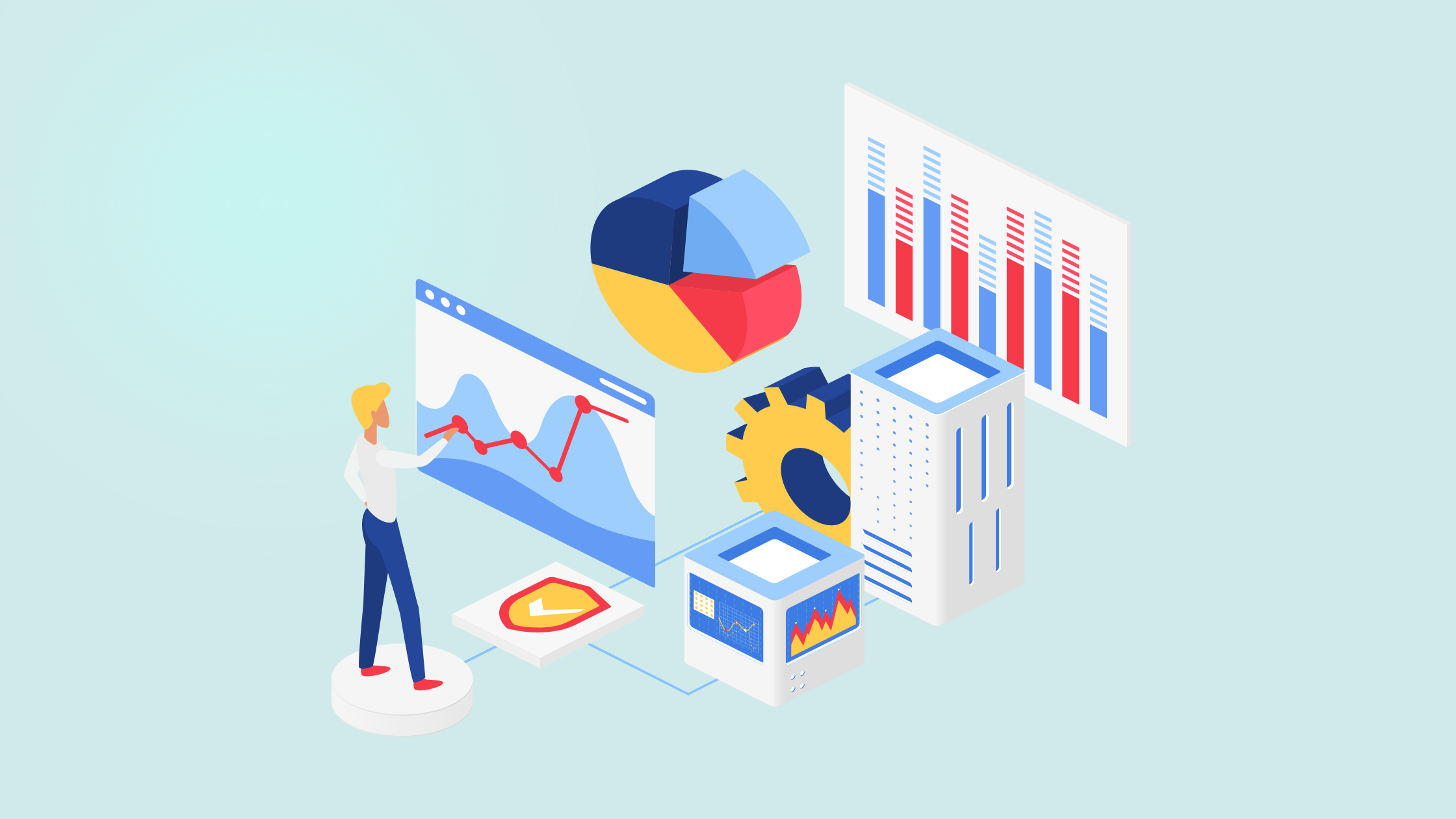In today’s era of vast amounts of information, often referred to as big data, businesses are grappling with the challenge of extracting meaningful insights from a flood of raw data.
This is where the super blend of art and science known as data visualization comes into play.
As an expert on all things analytical here at dataandadoodle.com, I will delve into the intricate process of converting raw data into real actionable insights for your business through effective data visualization.
So first let’s get the mini takeaway before we look in a little more detail.
Data visualization transforms complex data into understandable patterns that inform strategic decisions. steps such as data cleaning, choosing appropriate visualization types, crafting a narrative, enhancing clarity, iterative refinement, incorporating interactivity, and extracting insights. This turns raw data into actionable insights for businesses.
Ok so now we’ve got the short answer in place before we dive deeper, let’s explore what raw data is.
Raw data: What is it?
Raw data in a nutshell is the building blocks of information, encompassing unprocessed and unstructured pieces of information gathered from various sources.
It acts as the raw material that serves as the foundation for all analysis and interpretation.
It can be in various forms, including numerical values, text, images, or sensor readings.
This raw data, similar to any raw product is at the beginning of its journey! So therefore it lacks context or meaning.
This unrefined data requires processing, organization, and transformation to unlock its valuable insights and potential to grow your business.
So while raw data forms the basis of analysis, it often poses complexities and challenges.
Imagine dealing with spreadsheets containing thousands of rows and columns – it’s almost like staring at a jigsaw puzzle without a clear picture!
“It acts as the raw material that serves as the foundation for all analysis and interpretation.”
This is where the journey of data visualization begins:
So let’s try and simplify things a little and take it in 10 simple steps:
Step 1: Data Cleaning and Preparation
Before visualization can occur, data must be cleansed and primed.
Inaccuracies, duplicates, and missing values can severely distort outcomes.
To successfully prep data you will need to identify and rectify these discrepancies, so you have a solid foundation.
Once cleaned, data must then be structured and organized for visualization tools to process effectively.
Step 2: Choosing the Right Visualization Type
It’s worth understanding that not all data can be effectively communicated through the same visualization type.
Bar charts, line graphs, scatter plots, heat maps, and more – each has a specific purpose.
Selecting the appropriate visualization depends on the data’s nature and the insights you aim to convey.
For example, sales trends might be best represented with line graphs, while categorical data comparisons could be more effectively displayed using bar charts.
“Selecting the appropriate visualization depends on the data’s nature and the insights you aim to convey.”
Step 3: Crafting a Story
Data visualization extends beyond creating visually pleasing charts; it’s about narrating a story.
Your data possesses a narrative – it could chronicle sales fluctuations, unveil correlations between variables, or depict customer demographic distributions.
An adeptly crafted data visualization should guide viewers through this narrative, making intricate insights readily digestible.
“Data visualization extends beyond creating visually pleasing charts; it’s about narrating a story.”
Step 4: Enhancing Clarity and Readability
Cluttered visuals can sometimes be more confusing than enlightening!
So it’s crucial to simplify and enhance the clarity of data visualization.
This means removing irrelevant information, incorporating fitting labels and titles, and ensuring a color palette that’s intuitive and accessible.
Effective visualization should convey information at a glance, without cognitive overload!
Step 5: Iterative Process and Refinement
Data visualization rarely unfolds in a single attempt.
As insights emerge, queries surface, sparking further exploration.
This iterative process entails refining existing visualizations or conceiving new ones to delve deeper into the data.
It’s a crucial aspect of the data journey, guaranteeing comprehensive and accurate insights.
Step 6: Incorporating Interactivity
Interactive data visualizations elevate user experiences.
Interactive features like tooltips, filters, and zooming empower users to explore data from various perspectives.
Interactive dashboards enable users to manipulate variables and observe their impacts on outcomes.
This interactivity helps to make sense of the data.
“Interactive data visualizations elevate user experiences.”
Step 7: Extracting Insights and Making Decisions
Ultimately, the purpose of data visualization is to extract insights that steer informed decisions.
A well-constructed visualization can unveil patterns, trends, outliers, and correlations concealed within raw data.
Translating these insights into action can lead to enhanced strategies, streamlined processes, and enriched user experiences.
So how does this work in real time?
Case Study: Visualizing Customer Behavior
As an example, let’s think about an e-commerce company’s case study.
The company has amassed a huge dataset detailing customer interactions on its website.
This company can unearth valuable insights and grow sales by following the crucial steps above.
So let’s see how it would work in the real world.
- Data Cleaning and Preparation: Rectifying incomplete entries and redundant data, the information is now ready for visualization.
- Choosing the Right Visualization Type: Line graphs elucidate trends in website visits, bounce rates, and conversion rates over time. A heatmap illustrates peak activity hours.
- Crafting a Story: Line graphs expose a correlation between website updates and heightened engagement. The heatmap spotlights periods of intense website traffic, suggesting potential promotional opportunities.
- Enhancing Clarity and Readability: Clear labels and color-coding render the visualizations easily interpretable.
- Iterative Process and Refinement: Data segmentation by demographics uncovers insights about distinct customer groups’ preferences.
- Incorporating Interactivity: An interactive dashboard allows users to filter data based on parameters like age group and location.
- Extracting Insights and Making Decisions: The company opts to optimize website updates during peak traffic hours and tailors marketing tactics to specific customer segments.
So as you’ve seen how this powerful data can transform your business goals, let’s finish off with some of my best tips.
Tips For Effective Data Visualization
As we’ve discovered, effective data visualization is an art that requires careful consideration and strategic execution.
To ensure your data tells a compelling and insightful story, keep a few key tips in mind.
Firstly, clarity is paramount. Simplify your visuals by eliminating unnecessary elements and using clear labels.
Secondly, choose the appropriate visualization type that best represents your data’s patterns and relationships.
Whether it’s a bar chart for comparisons or a line graph for trends, selecting the right format is crucial.
Thirdly, maintain consistency in design elements such as colors and fonts to create a cohesive visual experience.
Additionally, remember that less is often more!
Avoid overloading your visualization with data points that could confuse your audience.
Finally, always consider your audience’s perspective – what insights are most valuable to them?
This way you can create data visualizations that not only captivate but also transform complex data into a clear and actionable narrative.
“Simplify your visuals by eliminating unnecessary elements and using clear labels.”
From Raw Data to Insights – The Wrap
In the current landscape of information overload, often referred to as the era of “big data,” the challenge of extracting meaningful insights from a vast pool of raw data is undeniably daunting.
Every stage holds a key to unearthing valuable insights that drive strategic decisions.
The world of data visualization is far more than just aesthetics or pretty pictures! – it’s a conduit that translates intricate data into understandable patterns and informs critical choices.
This empowers you, as business owners and entrepreneurs, to explore beyond simply numbers and statistics, unlocking the stories concealed within data.
As I wrap up this article, remember that the journey from raw data to insights is a voyage of discovery, with each data point carrying its unique tale.
Before you go, don’t forget to head to my regularly updated blog for more data insights.




